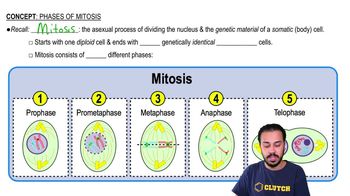Here are the essential concepts you must grasp in order to answer the question correctly.
Hemostasis
Hemostasis is the physiological process that prevents and stops bleeding, or hemorrhage. It involves a complex interaction between blood vessels, platelets, and various proteins in the blood known as clotting factors. The process is crucial for maintaining blood volume and pressure after injury, ensuring that blood loss is minimized.
Recommended video:
Phases of Coagulation
The three major phases of coagulation are vascular spasm, platelet plug formation, and coagulation cascade. Vascular spasm is initiated by blood vessel injury, leading to constriction. Platelet plug formation begins when platelets adhere to the exposed collagen, while the coagulation cascade is triggered by tissue factor exposure, resulting in the formation of a stable fibrin clot.
Recommended video:
Intrinsic vs. Extrinsic Pathways
The intrinsic and extrinsic pathways are two mechanisms that initiate the coagulation cascade. The intrinsic pathway is activated by damage to the blood vessel and involves several clotting factors present in the blood. In contrast, the extrinsic pathway is triggered by external trauma to the vessel, primarily through tissue factor released from damaged tissues, leading to a more rapid response.
Recommended video:
 Verified step by step guidance
Verified step by step guidance


